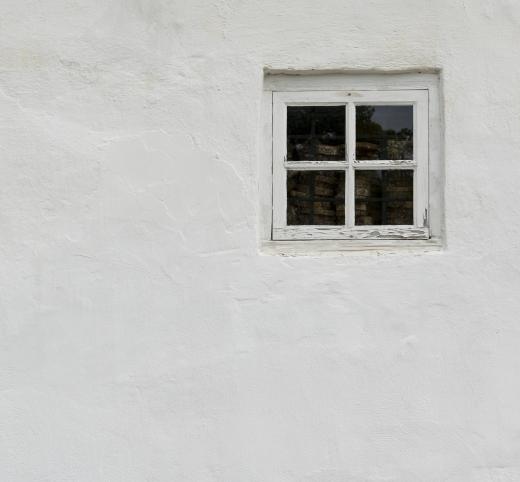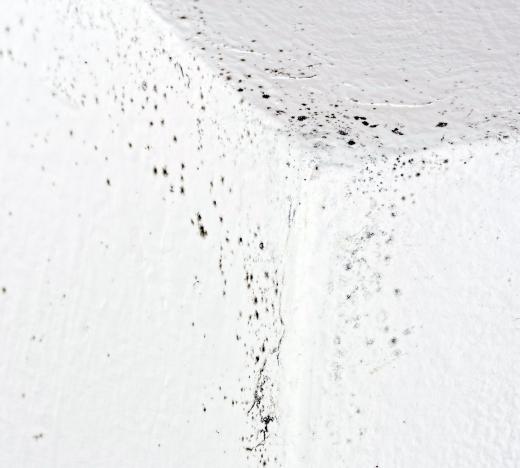A weep screed is a type of building material used along the base of an exterior stucco wall. Made from Portland cement, sand, and water, stucco is a naturally porous material that serves as a popular finish option for homes and commercial buildings. Without a weep screed in place, water that is absorbed through a stucco wall would become trapped within the structure, leading to potential problems with rot and mold. The screed serves as a vent so that the moisture can escape the stucco wall finish just above the foundation. These devices are generally only used on walls constructed with wood framing, and are not needed on stucco-coated masonry structures.
The standard weep screed consists of galavanized steel or thermoplastic, which helps to minimize rust and corrosion over time. It features a long vertical flange along one end, with pre-drilled nail holes used to attach this flange to a wall. A v-shaped assembly sits at the bottom of the flange, with holes along its length to allow moisture to escape. Generally, local building codes specify where these screeds should be placed in relation to the ground below to ensure sufficient drainage.

Correct weep screed installation is critical to the ability of this device to function as intended. The screed should be nailed directly to the plywood sheathing, which is in turn nailed to the wooden studs. Building paper is layered over the plywood, and extended all the way down to cover the length of the weep screed's vertical flange. Builders then apply stucco over the building paper using traditional tools and methods. By placing the building paper over the flange, workers can direct moisture out away from the building and through the holes in the screed.

Minimizing moisture infiltration into a building with a weep screed can go a long way towards preventing problems within the the structure. Without these forms of moisture control, homes are subject to mold and mildew, which can contribute to illness and ruin property. Moisture can also cause wood and other materials to rot, which may shorten the life of a building and lead to increased maintenance and repairs.
Homeowners should also be aware of some potential problems that may be attributed to the weep screed. The holes on these devices can easily become clogged if they are placed too close to the soil, or if sprinklers are allowed to spray water and soil in their direction. Clogged screeds can be very difficult to replace, and may require that a portion of the stucco wall is cut away along with the damaged screed.
